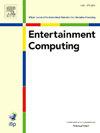Optimization study of badminton sports training system based on MoileNet OpenPose lightweight human posture estimation model
IF 2.4
3区 计算机科学
Q2 COMPUTER SCIENCE, CYBERNETICS
引用次数: 0
Abstract
The development of computer technology has effectively promoted the reform of traditional ball sports. However, the existing training methods based on computer technology are costly and difficult to promote on a large scale. Therefore, the study proposes to use deep learning techniques to improve the OpenPose tool and reduce the computational complexity of the model, in order to achieve large-scale promotion of computer-based ball sports training methods. The experimental results show that the model action score is high, 93.27 points, and the model processing time is 83 s. The model performs well in Frames Per Second index, reaching 27.5 frames/s. And it performs well in recall, precision, accuracy, and F1 value, reaching 90.13 %, 95.79 %, 89.75 %, and 89.78 %, respectively. In the comparison between the research design system and the traditional training system, the research system performs better with an average response time of only 0.96 s and an average occupancy rate of the central processor of only 20.23 %. This achievement provides an efficient and low-cost intelligent tool for badminton training, helping coaches achieve objective quantitative analysis of movements, reducing reliance on subjective experience, and providing data support for athletes’ immediate movement correction. The research successfully achieved a balance between model computational efficiency and recognition accuracy, verifying the feasibility of lightweight improvement. However, the current model mainly focuses on upper limb joints and still has shortcomings in posture analysis of other parts. In the future, research will explore the adaptability of models in complex dynamic scenarios and attempt to integrate biomechanical parameters to enhance the scientificity of feedback. In addition, the system’s functions can be extended to tactical analysis and physical fitness assessment, further promoting the digital transformation of sports training.
基于MoileNet OpenPose轻量级人体姿态估计模型的羽毛球运动训练系统优化研究
计算机技术的发展有力地推动了传统球类运动的改革。然而,现有的基于计算机技术的培训方法成本高,难以大规模推广。因此,本研究提出利用深度学习技术对OpenPose工具进行改进,降低模型的计算复杂度,以实现基于计算机的球类运动训练方法的大规模推广。实验结果表明,该模型动作得分较高,为93.27分,模型处理时间为83 s。该模型在帧/秒指标上表现良好,达到27.5帧/秒。该方法在查全率、查准率、准确率和F1值方面均达到90.13%、95.79%、89.75%和89.78%。在研究设计系统与传统训练系统的对比中,研究设计系统表现更好,平均响应时间仅为0.96 s,中央处理器平均占用率仅为20.23%。这一成果为羽毛球训练提供了一种高效、低成本的智能工具,帮助教练员实现对动作的客观定量分析,减少对主观经验的依赖,为运动员的即时动作纠正提供数据支持。研究成功地实现了模型计算效率和识别精度的平衡,验证了轻量化改进的可行性。但是,目前的模型主要针对上肢关节,在其他部位的姿态分析上还存在不足。未来的研究将探索模型在复杂动态场景下的适应性,并尝试整合生物力学参数,以增强反馈的科学性。此外,系统的功能还可以扩展到战术分析和体能评估,进一步促进运动训练的数字化转型。
本文章由计算机程序翻译,如有差异,请以英文原文为准。
求助全文
约1分钟内获得全文
求助全文
来源期刊

Entertainment Computing
Computer Science-Human-Computer Interaction
CiteScore
5.90
自引率
7.10%
发文量
66
期刊介绍:
Entertainment Computing publishes original, peer-reviewed research articles and serves as a forum for stimulating and disseminating innovative research ideas, emerging technologies, empirical investigations, state-of-the-art methods and tools in all aspects of digital entertainment, new media, entertainment computing, gaming, robotics, toys and applications among researchers, engineers, social scientists, artists and practitioners. Theoretical, technical, empirical, survey articles and case studies are all appropriate to the journal.
 求助内容:
求助内容: 应助结果提醒方式:
应助结果提醒方式:


